Australian Tropical Rainforest Plants - Online edition
Homalanthus novo-guineensis (Warb.) Lauterb. & K.Schum.
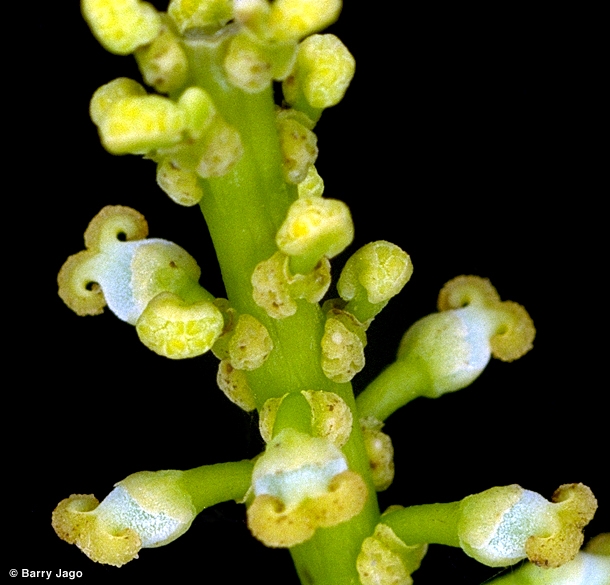
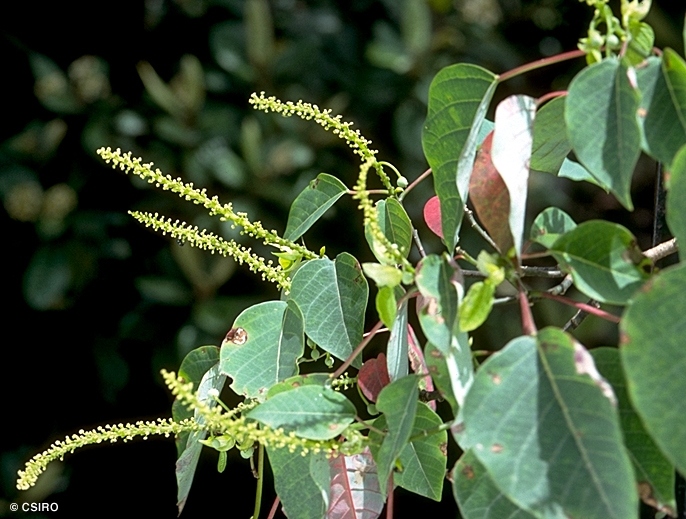
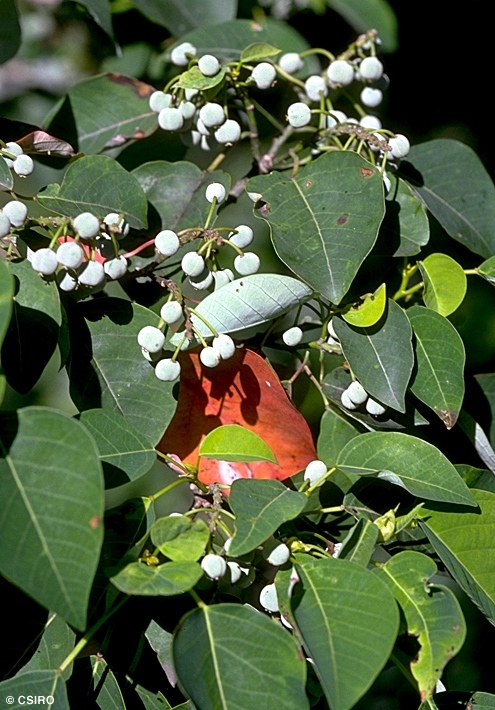
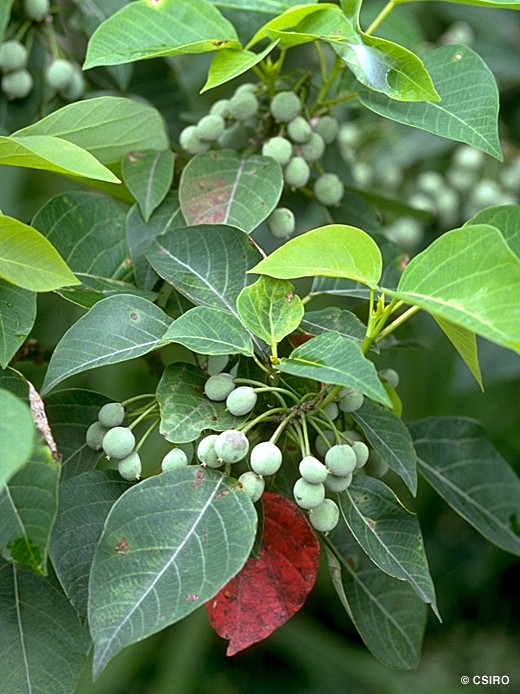
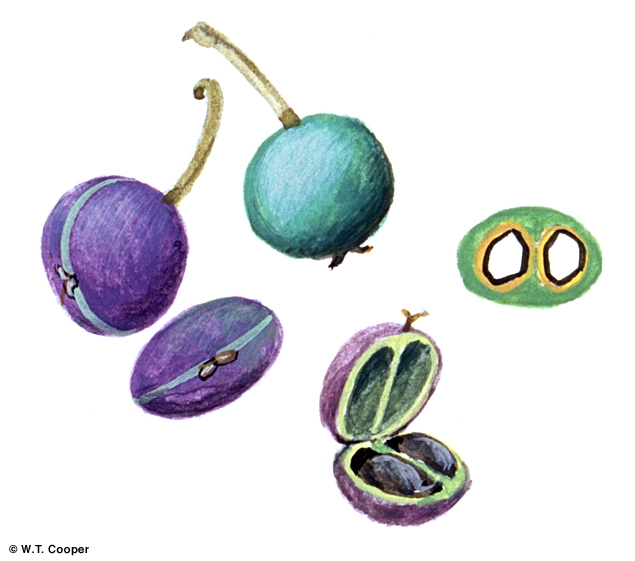
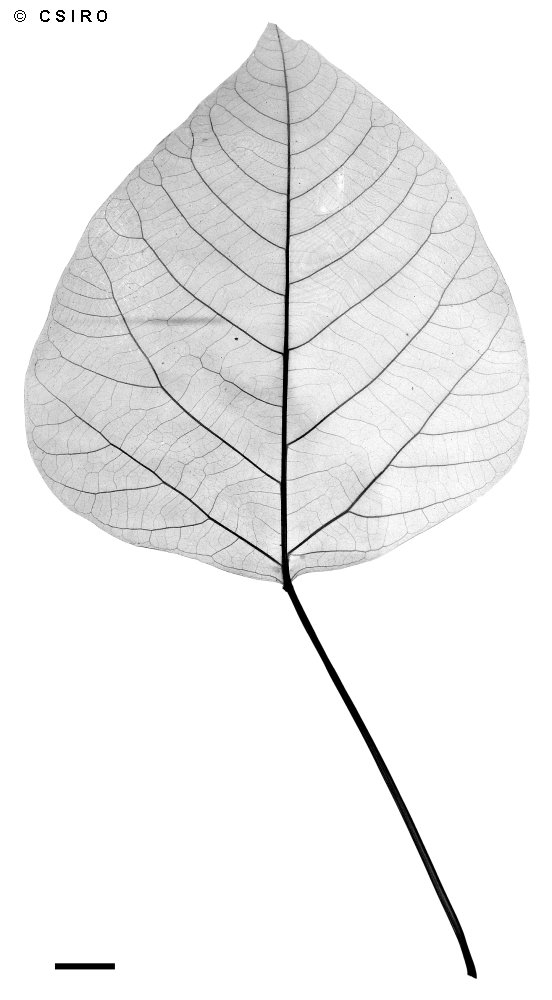
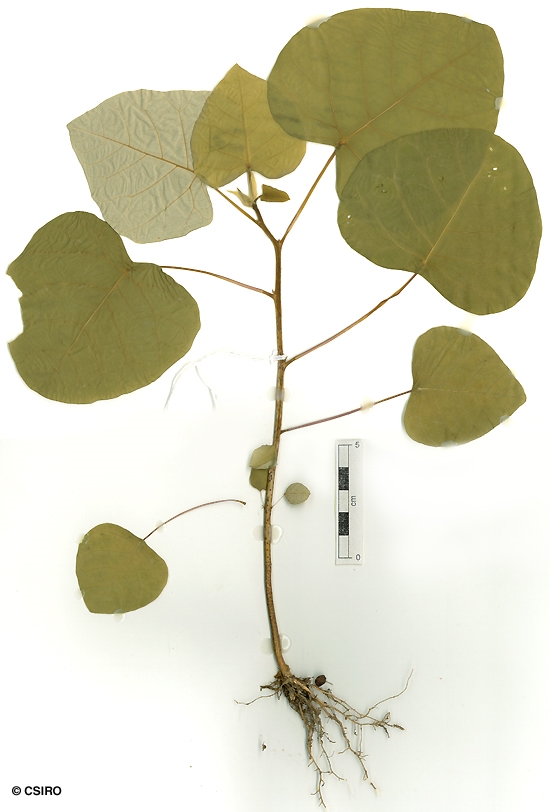

Schumann, K. (1900) Fl. Schutzgeb. Sudsee : 407. Type: Specific epithet originally novo-guineensis.
Bleeding Heart; Mouse Deer's Poplar; Native Bleeding Heart; Native Poplar; Poplar; Tropical Bleeding Heart
Seldom exceeding 30 cm dbh.
One or two cup-shaped glands on the upper surface of the leaf blade at its junction with the petiole. Glands frequently (but not always) pink or red inside. Stipules large and conspicuous but falling early. Leaf blades about 5-8 x 3.5-6.5 cm, much paler on the underside. Old leaves turn bright red just prior to falling.
Both male and female flowers laterally compressed, about 1-1.5 mm diam. Cerebriform glands present on the inflorescence axis at the base of each pedicel.
Cotyledons narrowly obovate-oblong, about 7-10 x 2 mm. First pair of leaves reniform to almost orbicular. At least some leaves usually peltate before the 10th leaf stage. At the tenth leaf stage: leaf blade cordate, apex broadly obtuse or rounded, upper surface glabrous, undersurface somewhat glaucous; two glands visible on the underside of the leaf blade near its junction with the petiole; several small flat glands occur on the underside of the leaf blade on lateral veins towards the margins; stipules sheathing, large and conspicuous, ovate, about 10-15 mm long, caducous. Seed germination time 14 to 28 days.
This is a fast growing regrowth species following major disturbance to rainforest.
The seeds of this species are eagerly sought by Brown Pigeons or Cuckoo Doves. Fruit eaten by several species of birds. Cooper & Cooper (1994).





